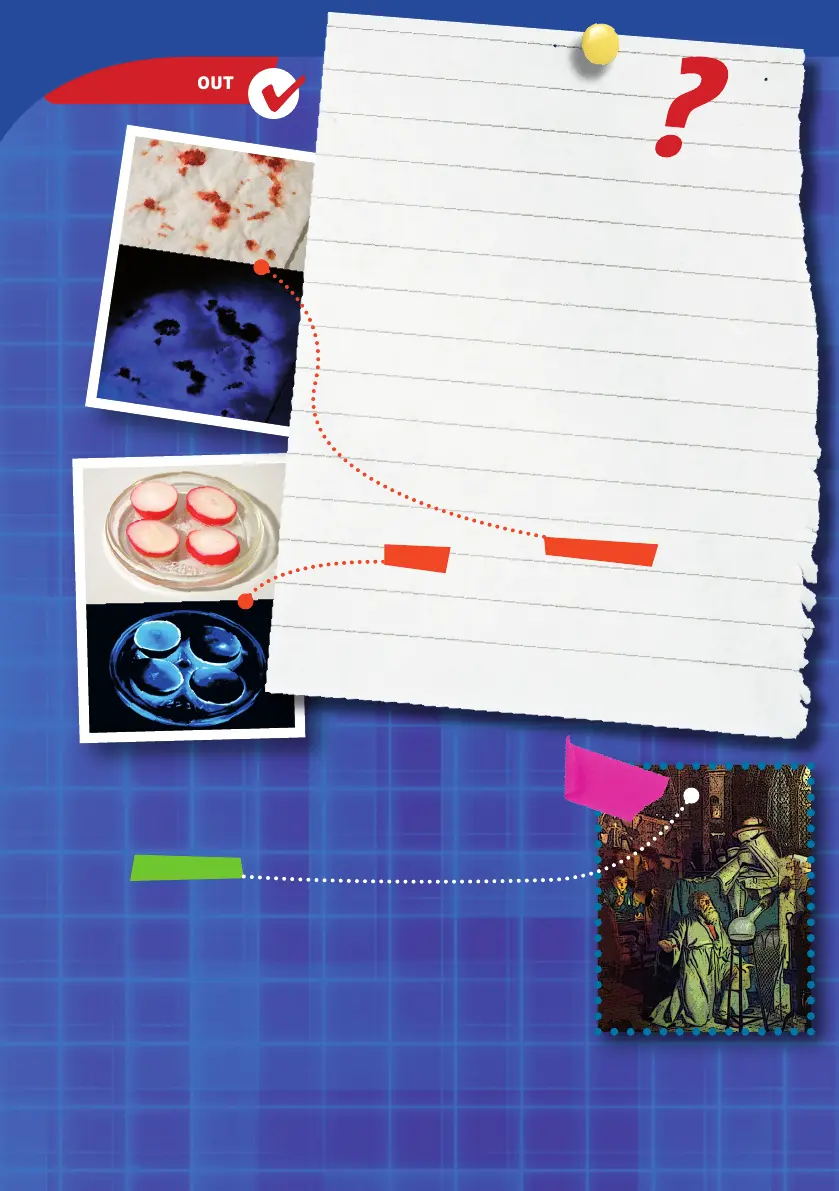Thames & Kosmos Glowing Chemistry handleiding
Handleiding
Je bekijkt pagina 48 van 52

CHECK IT OUT
46
In that reaction, the luminol undergoes conversion with
oxygen — a process resembling combustion. When materials
undergo combustion, the energy that is released in that
process is given off as heat. With luminol, on the other hand,
the energy is given off as light.
The oxygen for the reaction comes from the hydrogen
peroxide, and the sodium carbonate ensures that the solution
is basic (the opposite of acidic), without which the substances
wouldn’t react.
The light solution composed of luminol, sodium carbonate,
and hydrogen peroxide nevertheless remains dark, as you saw
in Experiment 17. It’s not all that easy for the hydrogen
peroxide to break down. For the light-emitting reaction to
occur, you need an additive, or a so-called
catalyst
. This is the
role played by the potassium hexacyanoferrate(III), for
example. In Experiment 19, the
traces of blood
play that role,
as do the
radishes
(which contain hydrogen peroxide-
decomposing
peroxidases
) in Experiment 20. Proteins like
these can be found in many living things, including humans.
They always have the task of decomposing hydrogen
peroxide, which accumulates in the cells as a harmful by-
product and thus must constantly be eliminated.
What happens
during the light-emitting
chemical reaction?
The discovery of phosphorus
The chemical element phosphorus was discovered with the help of the
light that it emits when exposed to air. Over 300 years ago, the German
alchemist Henning Brand attempted to make a “philosopher’s stone”
(which was supposed to grant eternal life and wealth) out of urine. To do
that, he heated a large quantity of urine for a long while until all the
water evaporated, and then heated what remained in an enclosed glass
flask. When he opened the cooled flask, it suddenly emitted bright light.
Brand called the light-generating substance phosphorus, after the Greek
word phosphoros, meaning light-bearer. This discovery was a great
sensation at the time. Today we know that the process of heating urine
converted naturally-occurring phosphorus compounds into so-called white
phosphorous, which emits light when it comes into contact with oxygen in the air — a typical
case of chemiluminescence.
Bekijk gratis de handleiding van Thames & Kosmos Glowing Chemistry, stel vragen en lees de antwoorden op veelvoorkomende problemen, of gebruik onze assistent om sneller informatie in de handleiding te vinden of uitleg te krijgen over specifieke functies.
Productinformatie
| Merk | Thames & Kosmos |
| Model | Glowing Chemistry |
| Categorie | Niet gecategoriseerd |
| Taal | Nederlands |
| Grootte | 26917 MB |







